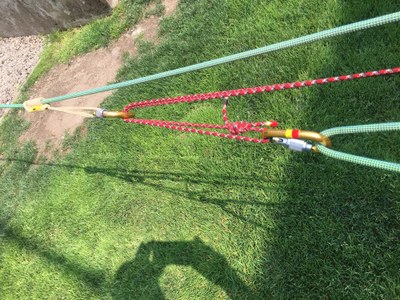
Lecture: Intermediate Anchors & Self-Rescue Unit
Intermediate Lecture #4 - Self Rescue - Mountaineers Tacoma Program Center
Intermediate Lecture 4 - Self Rescue
- Thu, Feb 28, 2019
- Tacoma Climbing Subcommittee - Intermediate Climbing
- Climbing
- Adults
- Moderate
- 13 (24 capacity)
- 4 (10 capacity)
- Cancellation & Refund Policy
Tacoma Program Center 7 pm upstairs classroom
Reading:
Self Rescue by David Fasulo 2nd Edition (Notated as F2 in lecture notes below)
Updated extended rappel method: https://www.mountaineers.org/blog/how-to-extended-rappel
Videos:
How to use a guide-style belay device: https://www.youtube.com/watch?v=KM5c9wlTReo
Lecture Outline:
A. Discussion:
- Field Trip Logistics – 5-10 mins
- Field Trip and Lecture Gear: helmet, harness, boots, parabiner with belay device, personal anchor, cordelette, perlon slings, webbing slings (sewn or tied), locking biners, regular biners, extra slings, Self Rescue Book by Fasulo-2nd edition
- Rescue perspective (15 mins)
- Safety chair perspective – 10 years …
- Should we vs. can we rescue
- Subjective pressures you will face
o New leader roles (vs. seasoned leaders), perceived or real hierarchy issues
o Credit for climb drives us forward, embarrassment of rescue
o Impressing others is a part of what we do – inevitable, but be cautious - When things go wrong, slow down
- PACE: Plan – Assess – Check – Execute – don’t rush into a system
- Rescues from others take time… at least hours and possibly days
- If something happens:
o Can we v. should we – evaluate carefully
o PACE yourselves
o Pinky swear…
B. Fasulo’s ACBs (5 mins)
- Assessment – patient, terrain (real ledges, technical ledges), confidence in technical skills
- Course of Action – descend, ascend, stabilize/shelter in place
- Belay – direct belay from anchor, redirected belay, harness belay
C. Technical Skills Practice:
- Knots – building blocks for self rescue (30 mins) – (no Dyneema that slides – low melt point)
- Friction hitches – Klemheist (F2 pg 47), Autoblock, Prusik and Bachman
- Load-releasable – Mariner (F2 pg 37), munter-slipped half hitch (F2 pg 35),
device slipped half hitch (F2 pg 90) - Three methods of belaying – advantages and disadvantages of each (30 mins)
1. Belay off harness toward climber while anchored behind you (basic course method)
2. Redirected belay off harness toward anchor – increases fall load on anchor, facilitates rescue
3. Belay from anchor (aka Direct Belay) – special (guide style) device needed for hands-free, facilitates rescue, have belay backup when lowering someone.
a. Unloading a direct belay (short descent to ledge) – skinny sling, over high biner, munterhitch belay backup (F2 pg 95 with munter not autoblock)
b. 3:1 haul for stuck follower (short ascend) – prusik, biner (F2 pg 166 but ignore harness tie-in) - Rescuing the Second - Counterweight Rappels:
A. Direct Belay (belaying off the anchor) - when there is a real ledge to take the weight of the follower (F2 pg 5-9 and 160-1).
B. Harness Belay - Building a “technical ledge” use when there is no ledge to lower the follower onto (F2 pg 168-9). A Technical Ledge = friction hitch + load releasable hitch combo *MEMORIZE* - Rappels and Belay from Anchor
1. Extended Device rappels –halved cordelette or single sling benefits (F2pg 24)
2. Saddle bags (ropes get caught on throws)
3. Assisted rappel/tandem rappel using a cordelette (F2 page 108)
Required Equipment
helmet
harness
parabiner
guide style belay device
personal anchor
cordelette
perlon slings and webbing slings (sewn or tied)
locking biners
regular biners
extra slings
Self Rescue Book by Fasulo-2nd edition
